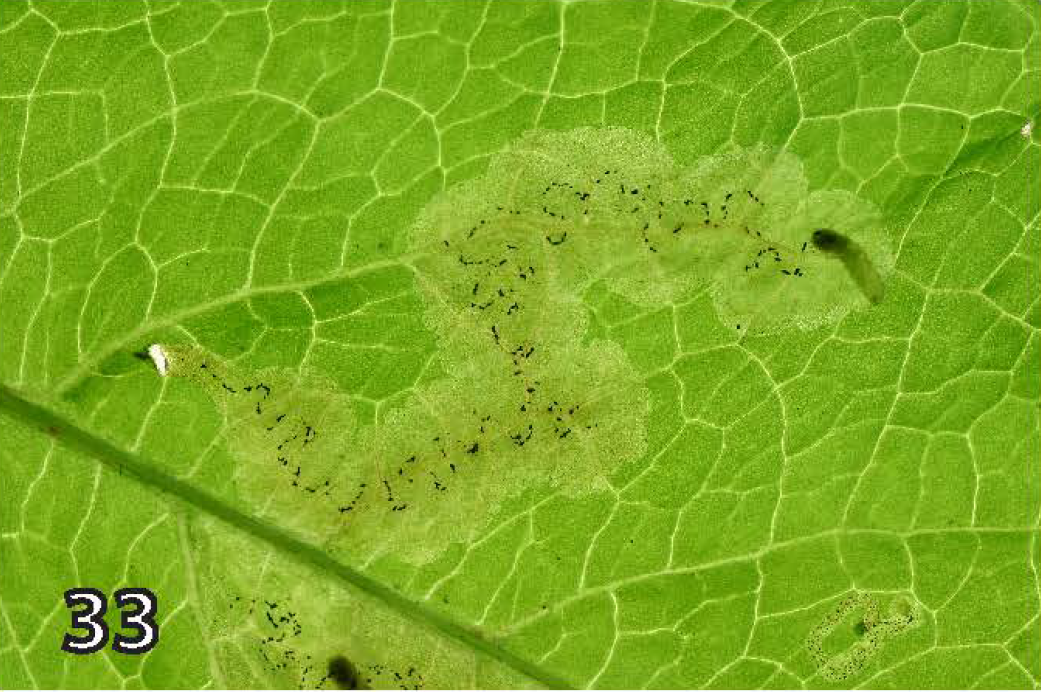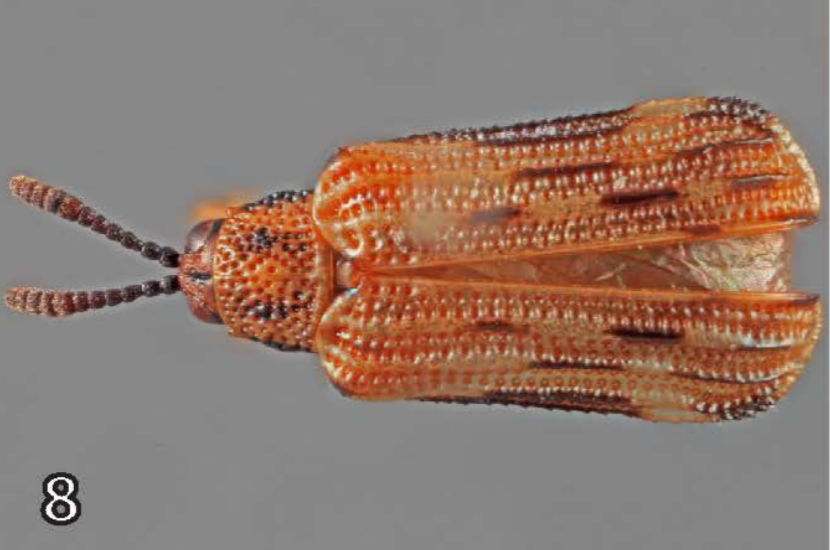
Even very ubiquitous and diverse groups of organisms are sometimes so cryptic we’re barely aware of them. Leaf-mining insects, for example, are abundant where-ever there are leafy plants, but most of us are barely aware of them. The leaf-mining life-style works so well, though, that it has evolved convergently in multiple insect orders; there are leaf-mining moths, flies, wasps, and beetles. What they share is a core aspect of their life-histories; as larvae, they feed within the tissues of leaves, in the succulent layers between upper and lower epidermis. As a group they constitute an ecological guild — a collection of species that, while not necessarily evolutionarily related, have similar approaches to making a living.
One of the main characteristics of the leaf-miner guild is their smallness; as larvae, they have to fit between the top and bottom of a leaf. That means they’re easy to overlook. Even though most of us who look at leaves at all are aware of they’re existence — we see the damage, the tunnels they leave within the leaves — not many naturalists can name even one species.

A new publication opens a window on leaf-miner diversity in the Huron Mountains. From 2000 to 2012, Mr. Ronald Priest, associated with the Entomology Department of Michigan State University, collected sprigs of plants with active leaf-miners, tending them in his home lab until adult insects emerged. Priest, working with a number of taxonomic experts, identified these tiny, obscure insects to species, further documenting them with painstaking and extremely detailed microscopic photographs. Because microscopes afford an extremely narrow depth-of-field, Priest used ‘focus stacking,’ a technique combining many photographs of slightly different focal distance to produce an image that is sharp over a wider range of depths than is possible with a single image.

The new paper identifies 63 leaf-mining species of flies, beetles, and moths. Twenty of these are new to Michigan, and two new two science (these two were described in a previous paper; one — Scrobipalpula manierreorum Priest — is a micromoth named in honor of Dr. William and Anne Manierre). Taking a step even deeper into the cryptic diversity hidden in the foliage, Priest was also able to rear 42 species of tiny parasitoid wasps using leaf-miners as hosts (parasitoids, like parasites, live in the tissues of their hosts; unlike true parasites, they ultimately kill the host, emerging as adults from the leaf-mines instead of their hosts).
Priest and his co-authors, Robert Kula and Michael Gates, published the work in The Great Lakes Entomologist, volume 52 (2019). Because the journal is ‘open-access’, the entire 44-page paper is freely available at https://scholar.valpo.edu/tgle/vol52/iss2/9/ .
